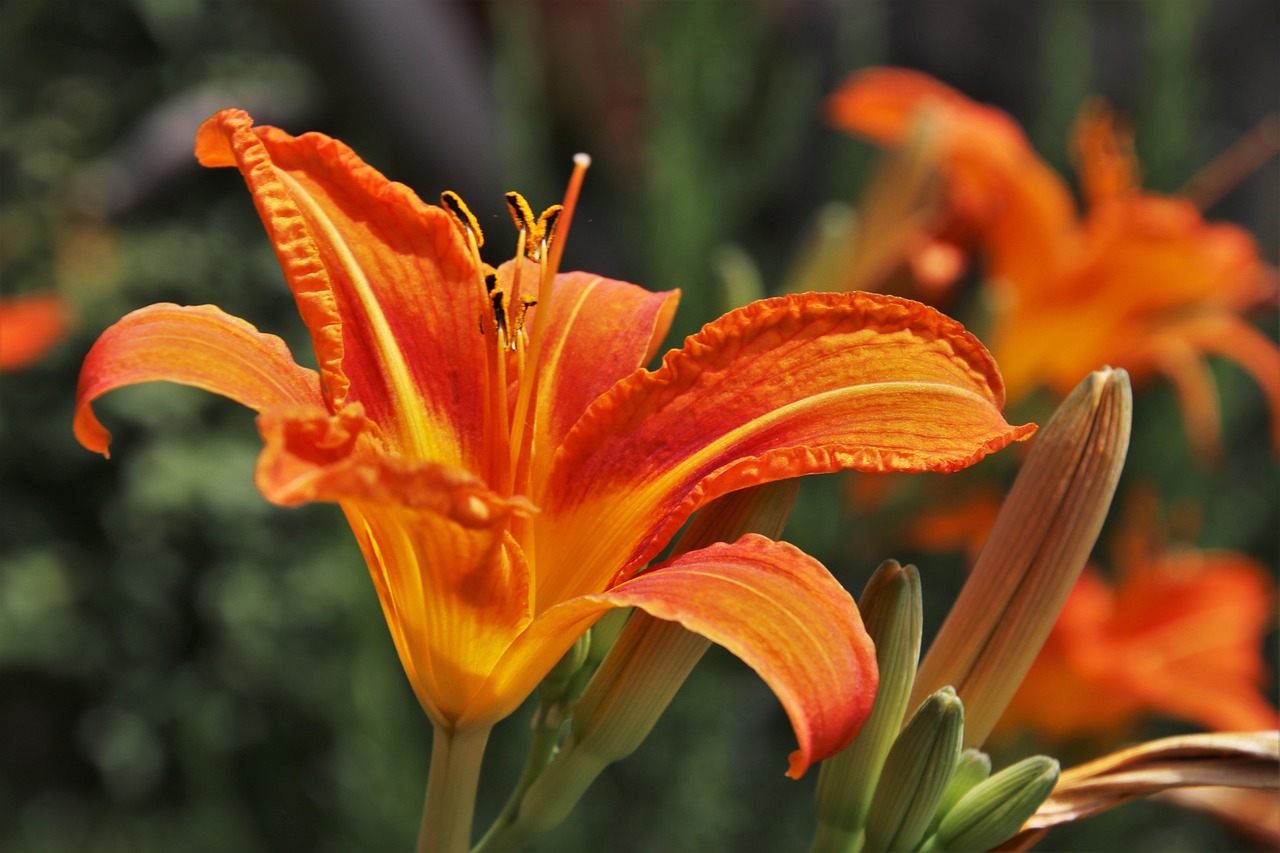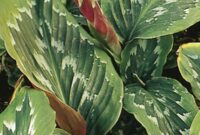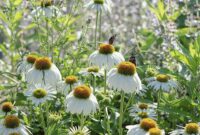Daylilies (Hemerocallis) are versatile and hardy perennials that can be paired with a variety of companion plants to create beautiful and well-balanced garden beds.
Here are 10 companion plants that work well with daylilies:
1. Coneflowers (Echinacea):
Coneflowers are a popular choice for daylily companions due to their striking appearance and pollinator-friendly attributes.
These perennial plants produce vibrant, daisy-like flowers with prominent cone-shaped centers, typically in shades of purple, pink, and white. Their bold, eye-catching colors provide a lively contrast when planted alongside daylilies, enhancing the overall aesthetics of your garden.
In addition to their visual appeal, coneflowers are also a magnet for pollinators, such as bees, butterflies, and beneficial insects. The nectar-rich blossoms serve as a valuable food source, promoting biodiversity in your garden while helping to support essential pollinators.
2. Black-Eyed Susans (Rudbeckia):
Black-Eyed Susans are renowned for their cheerful and bright yellow or orange flowers, making them a natural complement to daylilies. The bold and contrasting colors of these daisy-like blooms create an eye-catching display when combined with daylilies in garden beds or borders.
Black-Eyed Susans are easy to grow and maintain, making them an excellent choice for gardeners of all skill levels. Their extended bloom time ensures that your garden remains vibrant and attractive throughout the summer and early fall.
3. Salvia:
Salvias, also known as sages, offer a wide range of options in terms of colors and sizes, making them versatile companions for daylilies.
These plants are available in various shades, including deep purples, vibrant reds, and calming blues. Their distinctive, tubular-shaped flowers not only add aesthetic appeal but also attract pollinators such as hummingbirds and bees.
Salvias are known for their long-lasting blooms and adaptability to different soil types and growing conditions.
Planting salvias alongside daylilies can create a visually dynamic garden landscape while supporting essential pollinators that contribute to a healthy ecosystem.
4. Lavender (Lavandula):
Lavender is a fragrant and visually appealing companion for daylilies. Its spiky, aromatic blooms come in various shades of purple, blue, and white, which create a charming contrast when planted alongside the vibrant daylily flowers.
Lavender’s distinct fragrance adds a sensory dimension to your garden, making it a pleasant place to stroll and relax.
In addition to its aesthetic qualities, lavender also serves a practical purpose in the garden. The strong fragrance of lavender can act as a natural pest deterrent, helping to keep certain garden pests, such as aphids and mosquitoes, at bay.
This makes it not only a beautiful addition to your garden but also a functional one.
5. Russian Sage (Perovskia atriplicifolia):
Russian Sage is another excellent choice as a companion plant for daylilies. It features silvery-gray foliage that provides an elegant and distinctive backdrop for daylilies’ vibrant blooms.
The tall, airy spikes of lavender-blue flowers of Russian Sage add a vertical element to your garden and create a sense of movement as they sway in the breeze.
Russian Sage is known for its drought tolerance and ability to thrive in hot, sunny conditions, making it a resilient and low-maintenance addition to your garden. Its unique appearance and adaptability make it a valuable partner for daylilies in various garden styles.
6. Hostas:
Hostas are a popular choice for gardeners looking to contrast the bold and colorful daylily flowers with lush, shade-tolerant foliage.
Hostas come in a wide range of leaf shapes, sizes, and colors, from rich greens to variegated patterns and even blue-gray hues. When strategically planted alongside daylilies, hostas can create a visually pleasing balance and texture in the garden.
Hostas thrive in shaded or partially shaded areas, making them an ideal choice for underplanting daylilies in locations where sunlight may be limited.
Their attractive foliage remains vibrant throughout the growing season, providing long-lasting visual interest and harmonizing beautifully with the daylilies.
7. Catmint (Nepeta):
Catmint is a low-maintenance perennial plant known for its soft blue or lavender-colored flowers and its ability to attract pollinators, particularly bees.
This plant is an excellent choice for gardeners seeking to enhance the biodiversity of their garden while enjoying beautiful blooms.
Catmint is a member of the mint family, and it offers fragrant foliage that releases a pleasant scent when brushed or crushed.
Its soft, spiky flowers provide a lovely visual contrast when paired with daylilies, and the presence of bees and other pollinators contributes to a healthier garden ecosystem.
Catmint is also drought-tolerant and can thrive in various soil types, making it a versatile companion for daylilies.
8. Phlox (Phlox paniculata):
Phlox is a vibrant and colorful companion for daylilies, offering a burst of flowers in various shades, including pink, purple, white, and red. These delightful blooms attract butterflies to your garden, adding to the overall charm and beauty of the landscape.
Phlox paniculata, also known as garden phlox, typically produces large, fragrant flower clusters on tall stems. When planted alongside daylilies, they create a dynamic combination of colors and height variations that can elevate the visual impact of your garden.
9. Sedum:
Sedums are known for their succulent foliage and low-maintenance nature, making them an excellent choice as companions for daylilies. While they are often valued for their foliage, many sedum varieties also produce small, star-shaped flowers in shades of pink, red, and white.
Sedums can thrive in various growing conditions, including full sun and well-draining soil. Their drought tolerance and ability to withstand dry periods make them a resilient choice for gardens.
When planted near daylilies, sedums offer an interesting textural contrast, with their fleshy leaves and occasional bursts of colorful blooms.
10. Dianthus (Carnations and Pinks):
Dianthus, which includes varieties such as carnations and pinks, are low-growing perennials that provide a dense carpet of color in shades of pink, red, and white.
These charming and fragrant flowers create a visually appealing ground cover and a delightful contrast when combined with daylilies.
Dianthus plants are well-suited for edging garden beds or filling in gaps between daylilies and other taller perennials. Their compact growth habit and vibrant colors add depth and texture to the garden, enhancing its overall beauty.
When selecting companion plants for your daylilies, consider factors such as sunlight requirements, soil conditions, and bloom times to ensure a harmonious and thriving garden.



